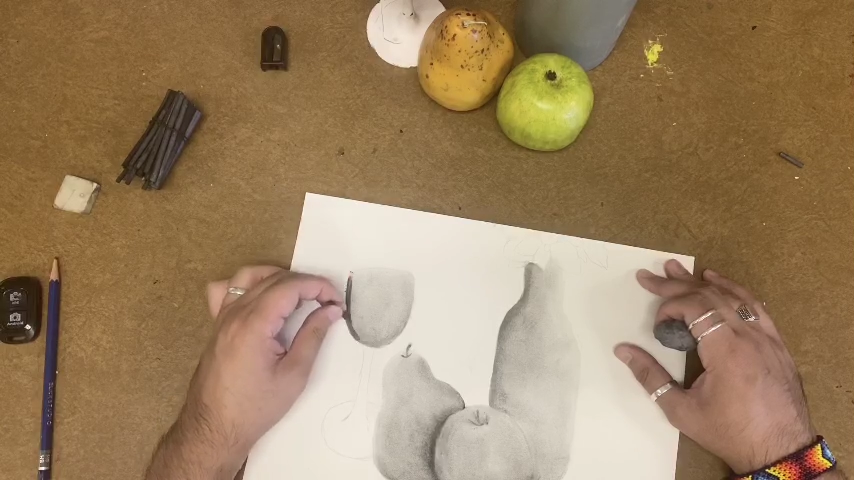Age Range: 7+
Time to Complete: 25 minutes
Supplies Needed
Paper
Pencil
Eraser
Have your drawing paper, pencil and eraser station set up. Directly in front of where you are working create a still life display of at least three objects of different sizes that you find around your residence.
On white drawing paper, very lightly holding your drawing pencil, begin by simplifying the object by breaking it down into large basic shapes. The goal is to achieve the contour of the objects you have chosen.
Once the largest shapes are complete, find where your light source is coming from. Add some light and dark lines to give your object some definition. You will constantly be looking up at your objects and down at your paper. The act of actively looking at what’s in front of you will help with proportion and scale.
Add in details like reflections, threading, logos and texture.
Now you can begin adding shades and highlights.
Still life: a representation of inanimate objects
Contour: the outline of something
Observational Drawing: Drawing what you see in front of you as realistically and as true as possible.
Impressionism: A style or movement in painting originating in France in the 1860s, characterized by a concern with depicting the visual impression of the moment, especially in terms of the shifting effect of light and color. Seeks to capture a feeling or experience rather than to achieve accurate depiction.
Value: The lightness or darkness of tones or colors




